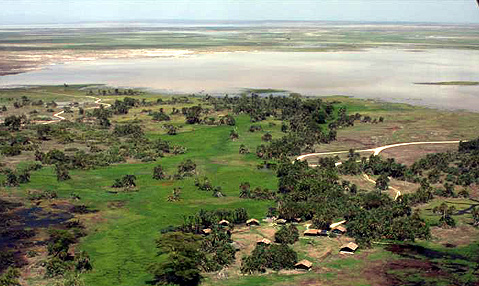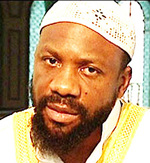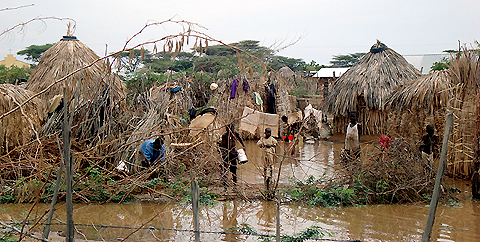
For three years it has been only a dust-bowl.
From the Serengeti to Tarangire to Tsavo to Samburu to the Mara, the rains are tumbling down. And the last to report torrents – as was to be suspected sitting in the rain shadow of Mt. Kilimanjaro – was Amboseli in late December. And with that report by Harvey Croze of the African Trust for Elephants, we can say definitively that…
It’s raining too much!
“Three inches [of rain] may sound pitiful for those getting inundated with rain and snow in other parts of the world, but in Amboseli that represents almost 20% of the average annual rainfall. In one week!” Croze wrote on January 7.
One of East Africa’s best writers and little known is the wife of the legendary elephant researcher, Ian Douglas-Hamilton. Here’s what Oria Hamilton had to say in her recently circulated Christmas Letter of 2009:
I can finally tell you ‘the drought has ended’ and with it wonderful things have happened. The outlying hills and mountains are dark, as if newly painted against massive white and grey clouds looming above us streaked in sun-setting orange light, and all over the land, green grass, green bushes, green trees can be seen. It has been raining nearly every day since I arrived, the river is flowing, gently and continuously taking all the stress and hardship with it. Today we have food in abundance and water everywhere. The earth is a rich damp dark brown. Nature is extraordinary, ever changing, regenerating, on the move, reproducing – each day racing to catch up for all those desperate dry months. Thousands of little acacias are sprouting all along the river bank and the grass seems to be growing while I look at it. I barely dare to tread on it while I take my walk and this week the ‘lamb tails’, little white flowers, have blossomed and from afar it looks as if it has snowed.”
Normally in Samburu now the rains would have stopped, but they haven’t, and that means that an El-Nino phenomenon is definitely in play. That’s good for the veld, but it’s not so good for the folks whose home it is.
Today Kenya announced nearly $1 billion dollar in combined aid from the Kenyan Government and aid organizations like the Red Cross to serve almost one million newly displaced persons. Between Kenya and Tanzania the death from raging floods was confirmed above 100, today. Roads are being literally washed away, with nothing left after three years of erosive power caused by the drought.
Livestock losses in Kenya’s far north are approaching 90%. And one of the most exceptional stories of this episode comes from the Turkana village of North Horr. In normal years the village gets 2″ of rain annually. The people in the area depend rather on the water systems and aquifers generated by Lake Turkana.
Since the rains began in Turkana in October, the area average that has fallen has been 10″. That’s more than five years worth of rain in three months. It is a desert incapable of dealing with this inundation even at the best of times.
I remember the last real El Nino in 1992-93, so I’m not quite ready to claim that all the drama we’re currently experiencing is completely a global climate change phenomenon. And back then the rains were actually a bit heavier than we’ve so far experienced this year, but the human and animal ramifications were far less severe.
As societies and ecosystems as a whole grow (in size) and develop economically, sudden change of any kind is harder to deal with. And that’s certainly what we’re seeing now in East Africa, and I venture in many other places in the world as well.
So put “able to deal with sudden change” at the top of every responsible world citizen’s most necessary skills. And, this is so hard to say, please Ngei, turn off the taps … at least a little bit.



